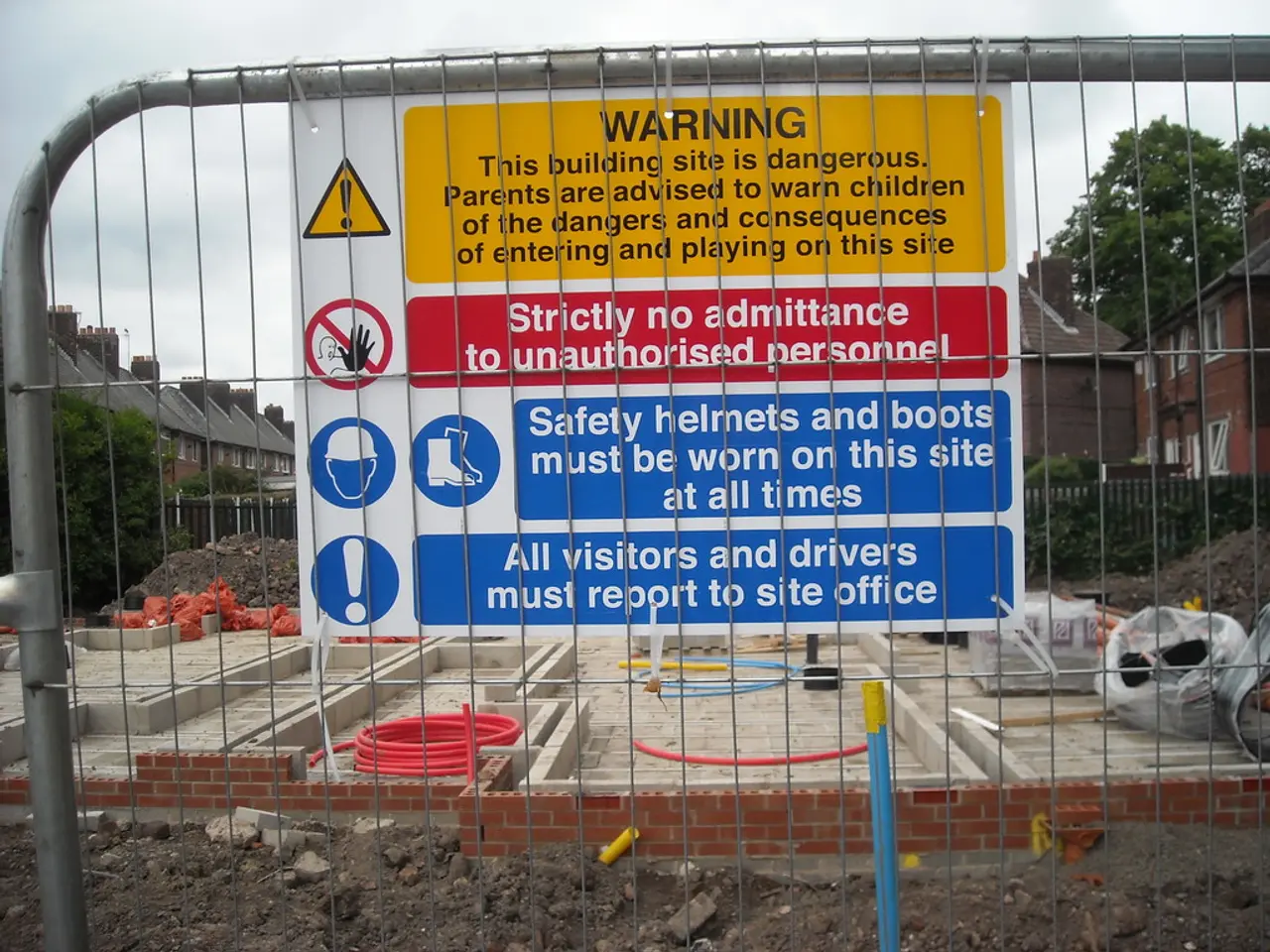Prioritizing dwelling constructions over communal amenities: Residents lacking essential services due to planning approvals
======================================================================================
In England, the construction of new settlements and the expansion of existing ones often results in a mixed bag of experiences for residents. While some move into thriving new communities, others find themselves waiting years for their neighbourhoods to catch up, with a lack of essential services and amenities.
This predicament can be attributed to several factors, including phased planning permissions, developer obligations, and enforcement gaps.
New settlements are frequently developed in phases, with permissions granted stage by stage. This approach allows for incremental growth of infrastructure and housing, but it can lead to delays and incomplete neighbourhood amenities and services if later phases are postponed or stalled. Areas can be left in a partial state, lacking the full range of community facilities necessary for a complete neighbourhood.
Developers are usually required to provide or contribute to infrastructure, affordable housing, and community facilities through legal agreements, such as Section 106 agreements. However, when developers delay or avoid fulfilling these obligations, neighbourhoods remain incomplete, with inadequate public services or amenities.
Local authorities may struggle to monitor and enforce compliance with planning obligations effectively, due to limited resources or legal complexities. Weak enforcement exacerbates the problem of incomplete infrastructures and community facilities, leaving residents with partially developed environments.
These issues are not theoretical. For instance, the new town of Northstowe in Cambridgeshire, with 10,000 planned homes, has been inhabited for six years, but still lacks essential services such as shops, cafes, GP surgeries, and community centers. Similarly, Cambourne in Cambridgeshire, which was approved in 2014 with £40 million worth of infrastructure, including a GP surgery, community hall, and connecting road, is still without these features ten years later.
In Northstowe, temporary community centers and sports pavilions have been installed, but many residents are still without basic local services. Residents of Cambourne have expressed frustration over the absence of key facilities such as a post office, newsagent, or bus services.
In some cases, councils have taken more proactive measures. The council in Westvale Park, Horley, later required approximately £12 million in bonds to ensure completion of the facilities by 2026. In extreme cases, councils have even issued stop notices against the consortium of homebuilders due to the lack of completed facilities.
Conningbrook in Kent, however, provides a contrasting example. Redrow and Quinn Estates secured permission in 2022 for a development of 725 homes, and by early 2024, the development included new wetlands, a primary school, village green, a community building, and open space. This demonstrates how planned phasing, community infrastructure levy, and planning conditions can match housing delivery when implemented effectively.
In conclusion, the challenges faced by newly built or expanding settlements in England are complex and multifaceted. Phased permissions can create uncertainty about completion timelines, unmet developer obligations lead to missing amenities, and enforcement gaps undermine the delivery of planned infrastructure. These issues need to be addressed to ensure that residents move into complete, thriving communities, rather than incomplete ones.
Read also:
- Enhancements to Networking in Senior Care, Fedding Positive Experiences for Service Providers and Elderly Residents
- CDCH Highlights Increasing Tularemia Cases, Calls for Immediate Action
- Ammonia Levels Interventions: Classification and Complications
- Diabetic Retinopathy Laser Surgery: Details and Potential Side Effects







